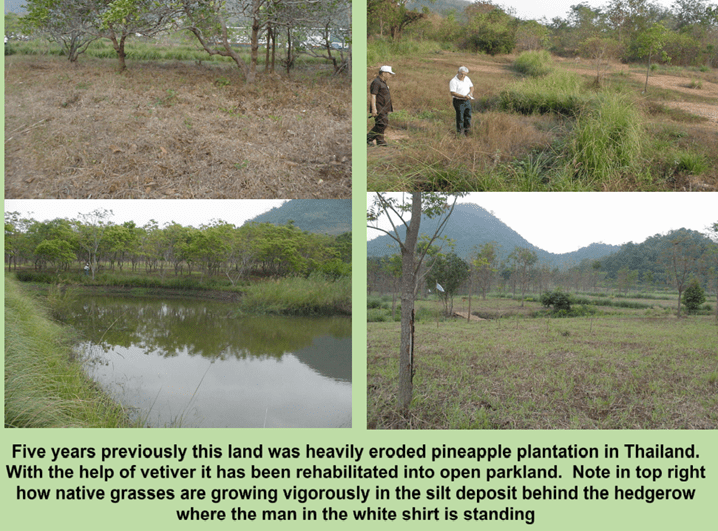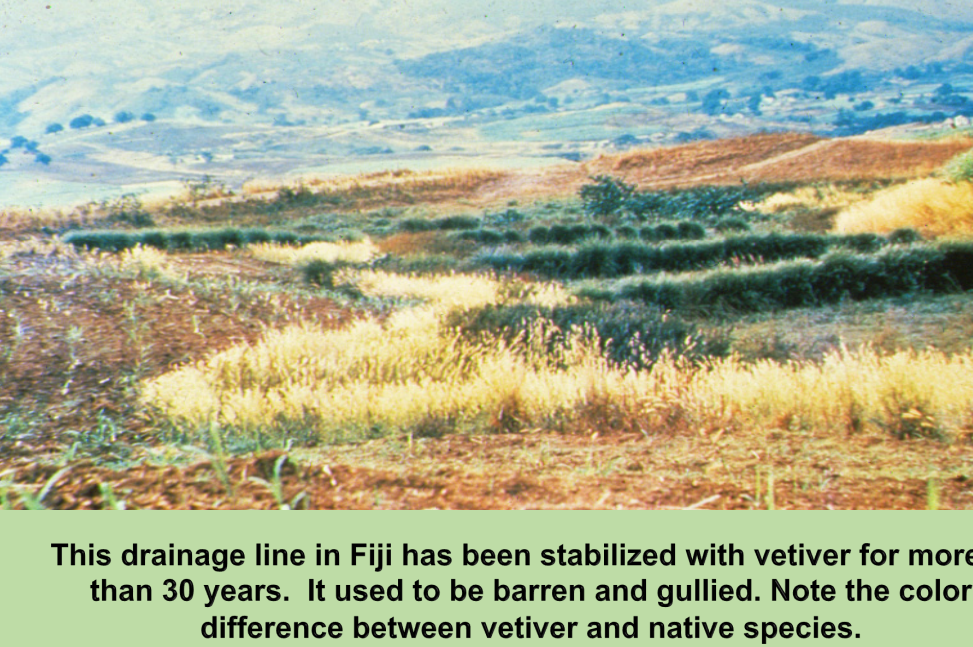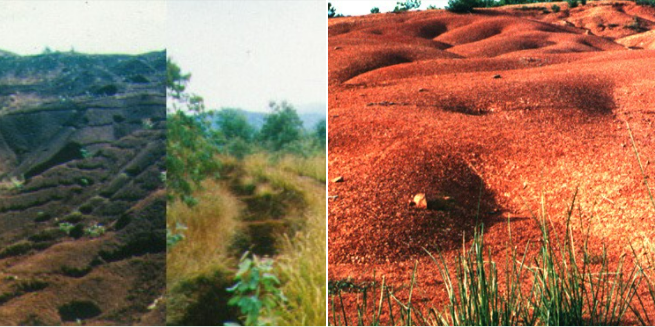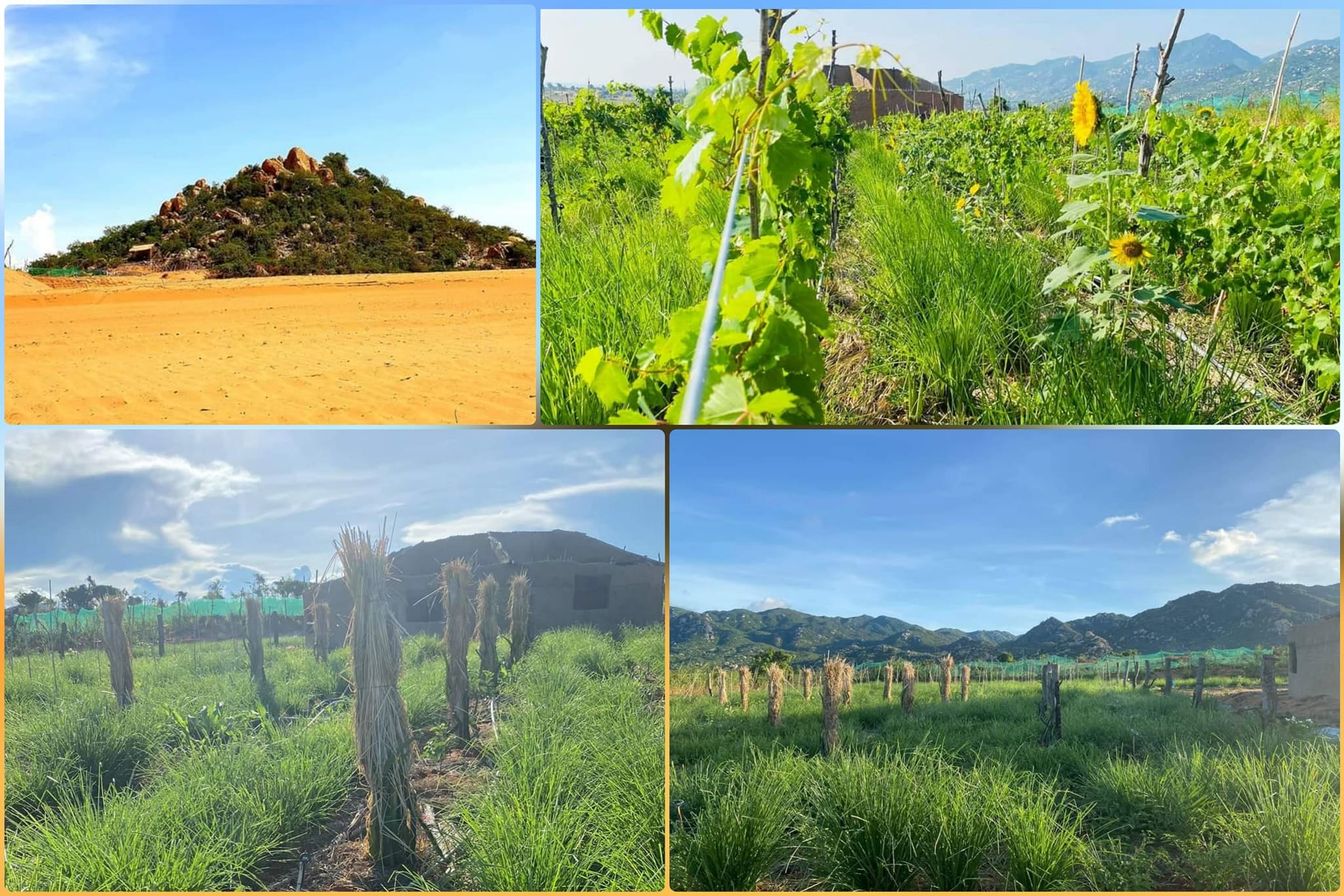Vetiver System for Land Rehabilitation
Introductory Photo Essay: VS_Land_rehab1.pdf (vetiver.org)
Vettiver Grass Technology is an excellent “fix it” tool for land rehabilitation. (1) it survives extreme soil and rainfall conditions (2) it is tolerant to fire, grazing,pest and toxic chemicals (3) it is non invasive and stays where it is planted.
It benefits includes: (1) the development of positive micro climates to allow native species to be established (2) provide a conducive environment for establishing trees (3) as a barrier it will reduce runoff in storm events to the benefit of other plants (4) improved ground water and better water flows in adjacent streams (5) ability to rehabilitate gullies.
VGT has a significant role in Land rehabilitation of all types. It is an excellent choice for stabilizing gullies where high velocity flows are the norm during heavy storm events. Vetiver hedge rows make effective barriers across the gully floor but often need a bit of help from earth bags to get established. Degraded lands, often devoid of all top soil are notoriously difficult to rehabilitate. Tree planting normally fails because the soil moisture content and nutrient status is often low. Vetiver when planted correctly under such conditions will thrive and create a micro climate alongside the hedge that allows and encourages other plants to get established.
Vetiver has also been applied successfully in lowland areas of eastern Nigerian and in both the Congos to rehab and stabilize enormous urban gullies that cut back into residential and commercial areas literally “swallowing” up structures, careful design and the inclusion of vetiver has proven an effective remedy.








Ravine Stabilization in Brazzaville, Congo. This is a modified power point of Alain Ndona’s work in stabilizing some massive urban ravines in Brazzaville. This follows his successful work in ravine stabilization in the DR Congo.